Abstract
The Russian Federation has made an intensive effort to compile and use information on the environment and human health. In 1996-1997, we evaluated the information that was collected and analyzed on the local (raion), regional (oblast), and federal levels with reference to its usefulness in the assessment of environmental health effects. The Russian Federation maintains standardized nationwide institutions that routinely collect health data in polyclinics and hospitals and then report to the national offices. The allocations of the workforce and the broad range of surveyed health outcomes are extensive, but a lack of systematic control of information quality limits the ability to take full advantage of these efforts. On the other hand, the hierarchical system of data collection has advantages over more decentralized or commercial health systems. A major weakness in the current reporting is the aggregation and transformation of data. Although this may not disturb the generation of health statistics, it seriously limits the use of regional and federal level data in the assessment of health effects of environmental exposures. In spite of limitations, some revised approaches to the analysis of existing data may be both feasible and fruitful. Combining information from routine data and newly collected data is likely to be the most effective way to assess the relationship between environmental exposures and diseases. Although there is a strong and justifiable desire to rapidly translate information of environmental health effects into policy alternatives, at present, it seems more useful to emphasize data quality, completeness, and plans for the use of data.
Full text
PDF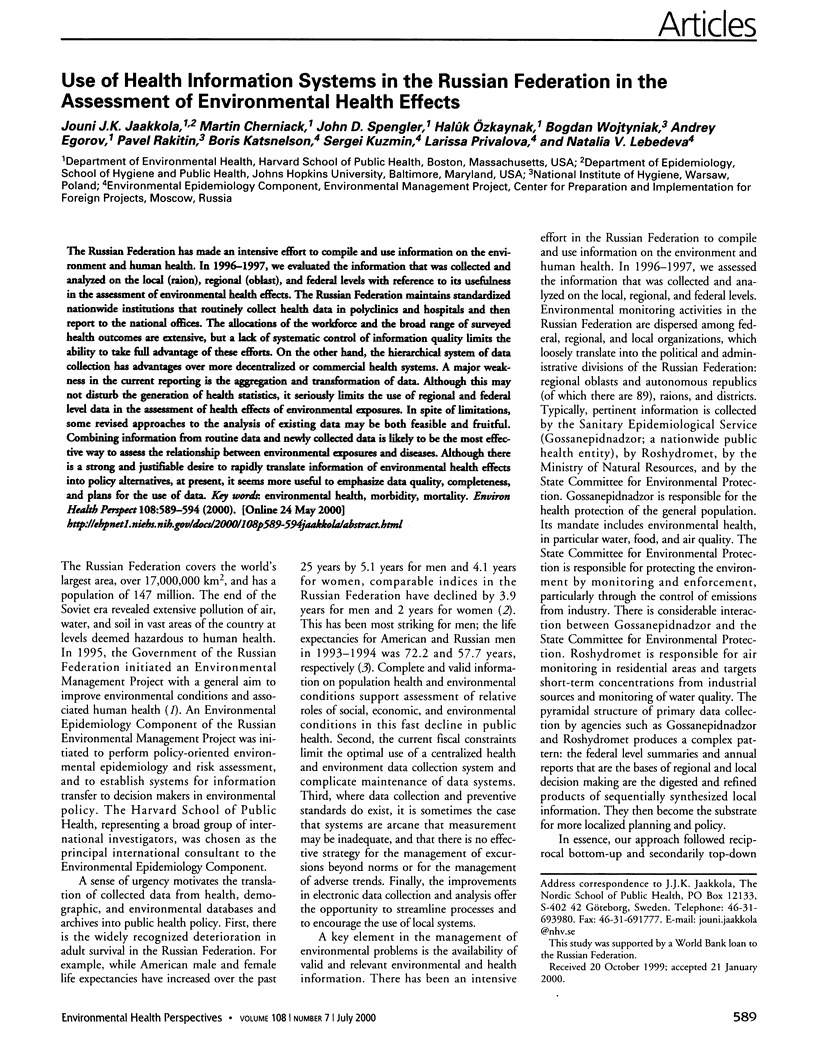
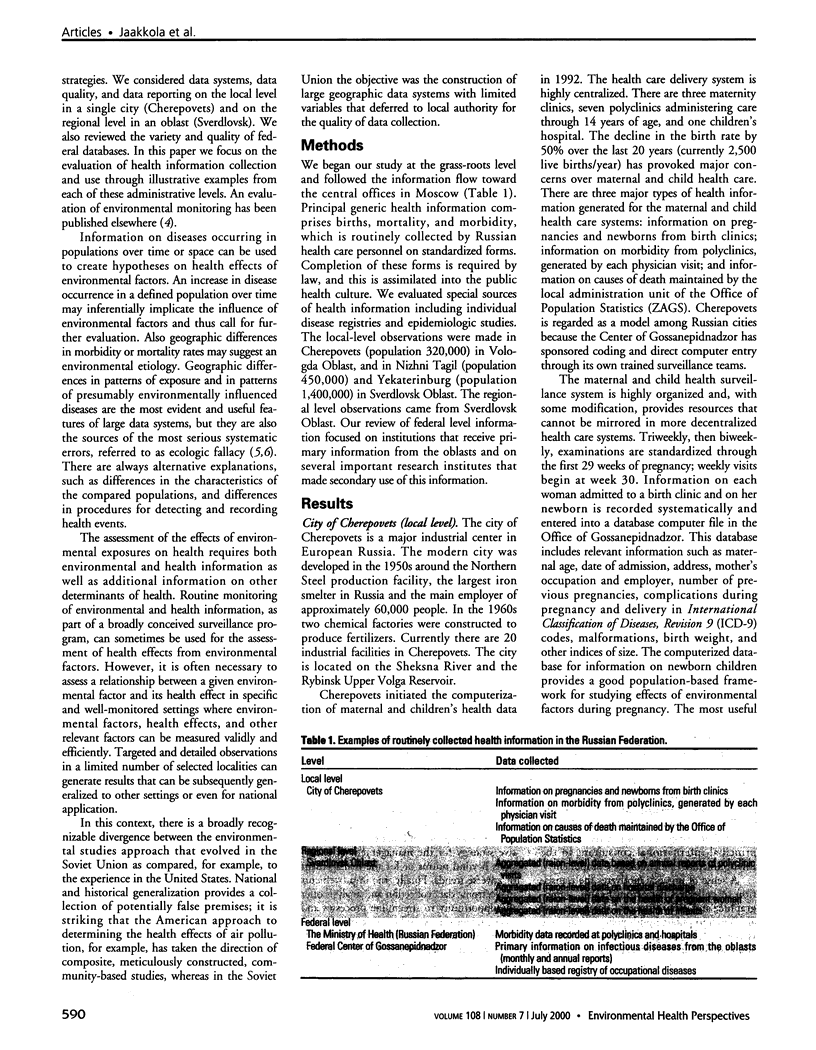
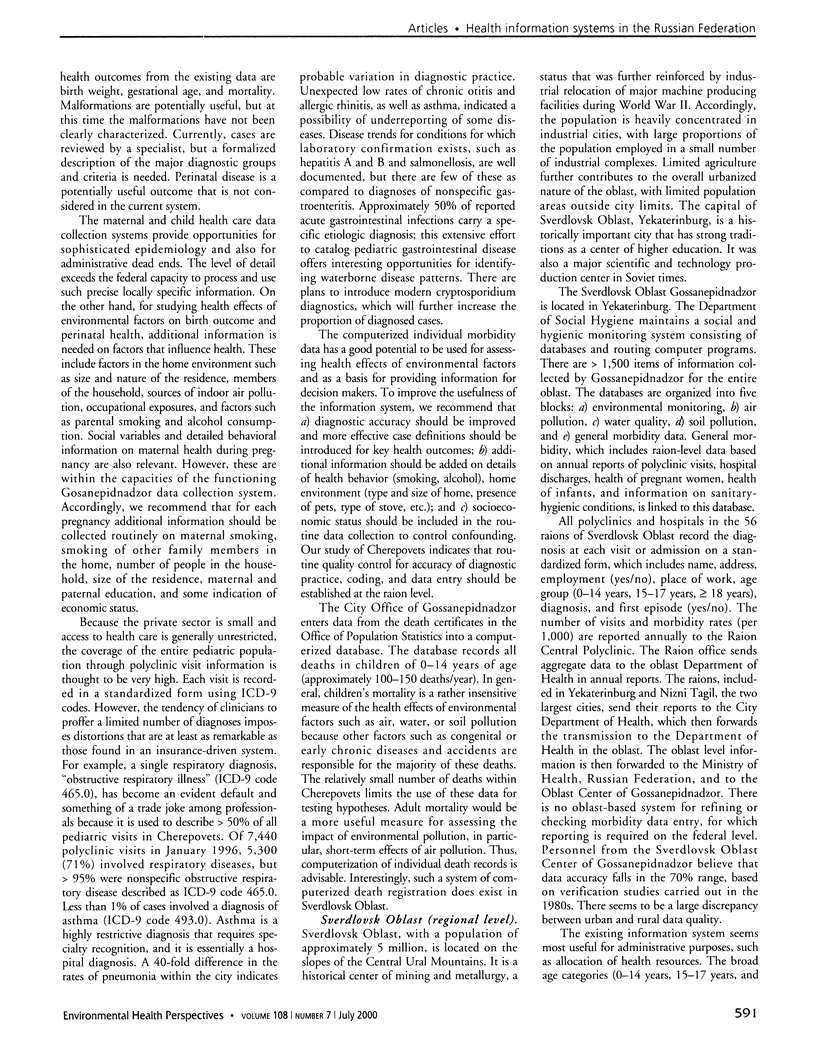
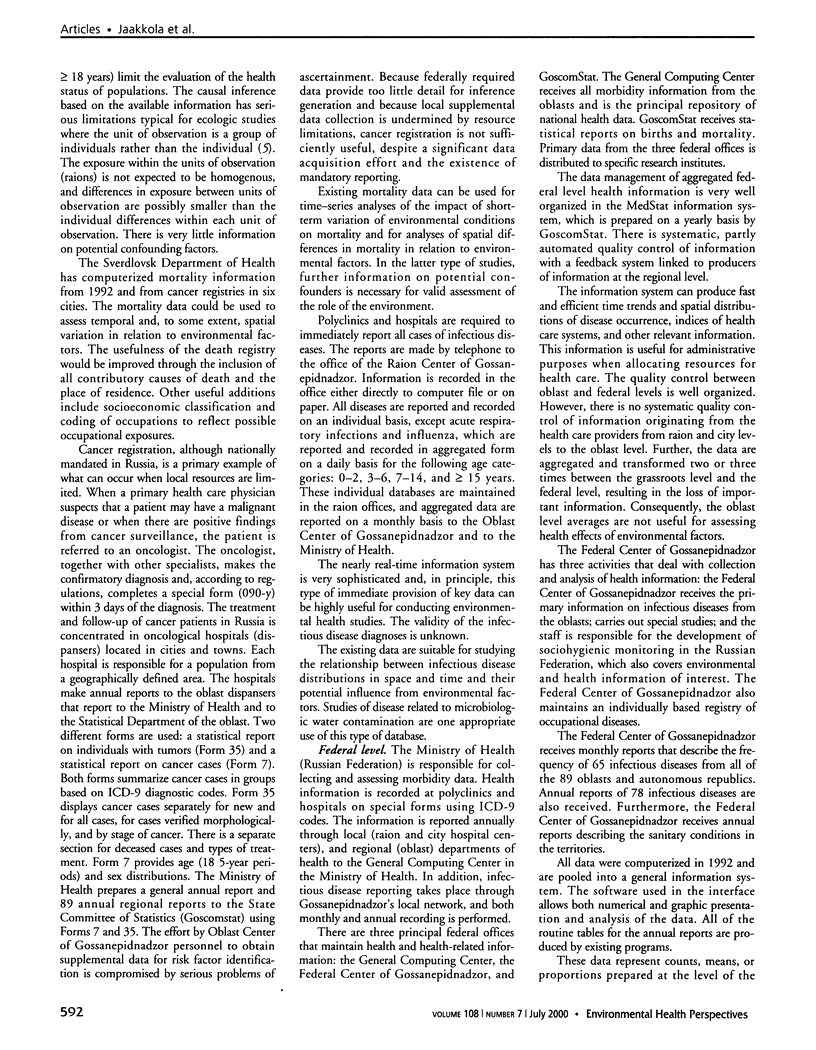
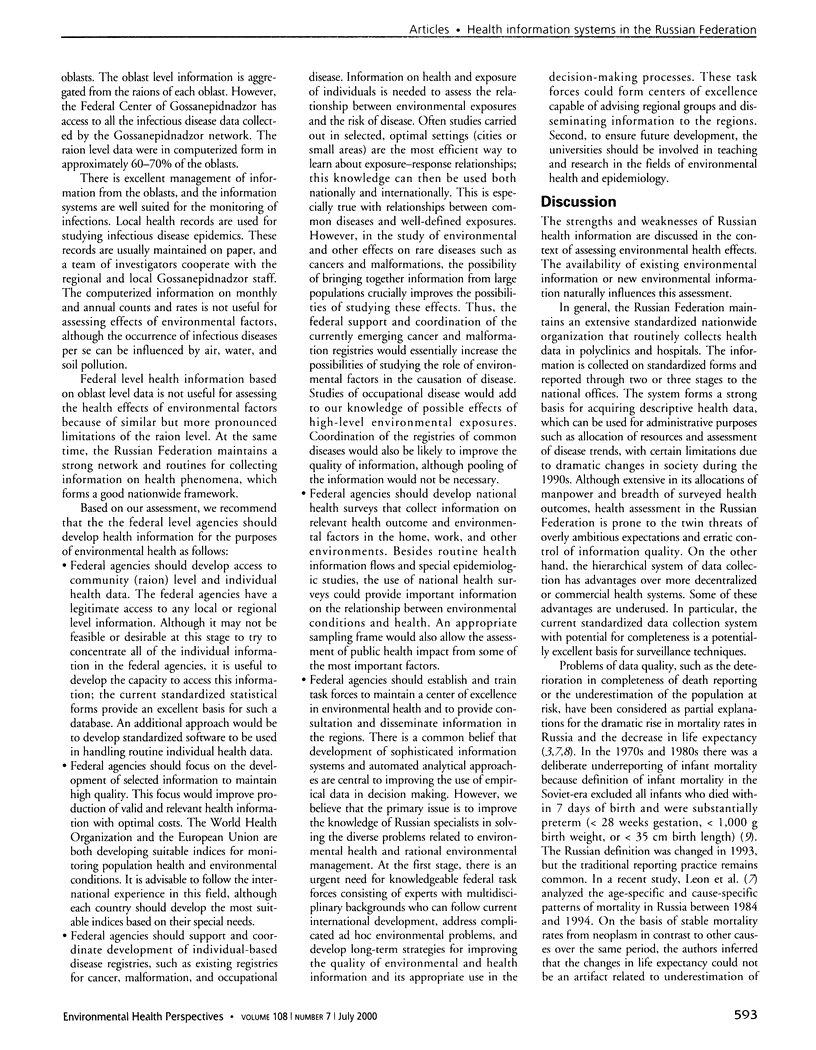
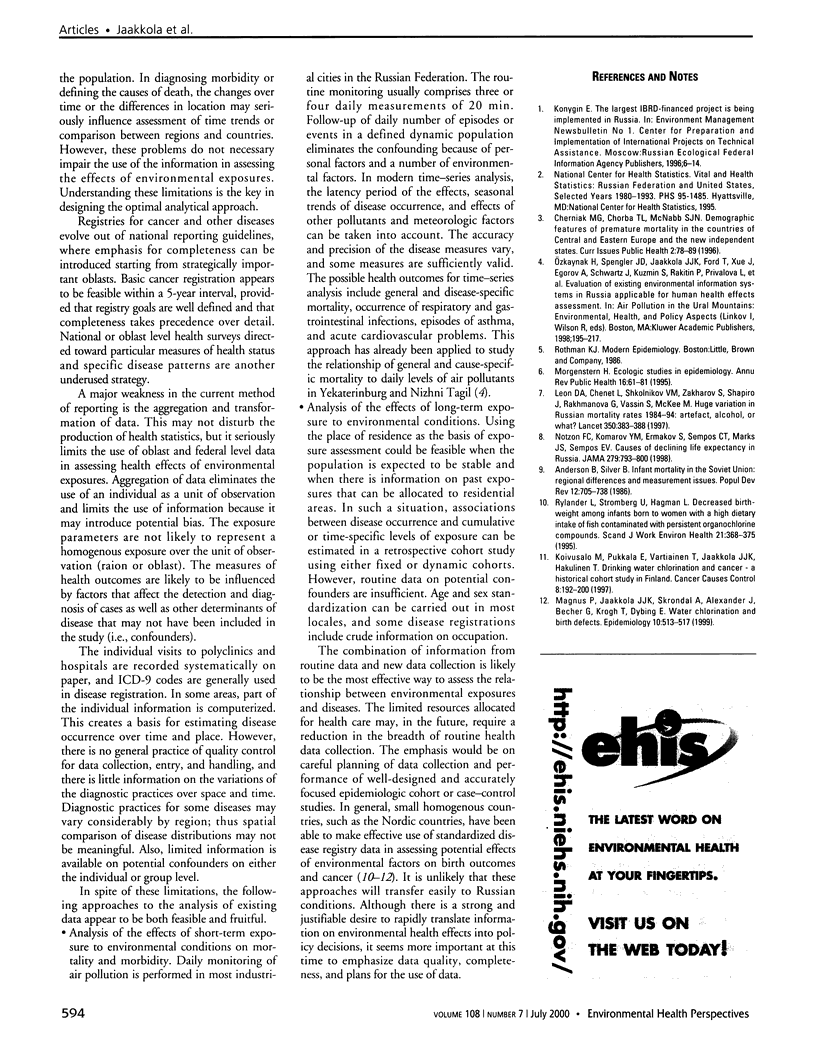
Selected References
These references are in PubMed. This may not be the complete list of references from this article.
- Koivusalo M., Pukkala E., Vartiainen T., Jaakkola J. J., Hakulinen T. Drinking water chlorination and cancer-a historical cohort study in Finland. Cancer Causes Control. 1997 Mar;8(2):192–200. doi: 10.1023/a:1018420229802. [DOI] [PubMed] [Google Scholar]
- Leon D. A., Chenet L., Shkolnikov V. M., Zakharov S., Shapiro J., Rakhmanova G., Vassin S., McKee M. Huge variation in Russian mortality rates 1984-94: artefact, alcohol, or what? Lancet. 1997 Aug 9;350(9075):383–388. doi: 10.1016/S0140-6736(97)03360-6. [DOI] [PubMed] [Google Scholar]
- Magnus P., Jaakkola J. J., Skrondal A., Alexander J., Becher G., Krogh T., Dybing E. Water chlorination and birth defects. Epidemiology. 1999 Sep;10(5):513–517. [PubMed] [Google Scholar]
- Morgenstern H. Ecologic studies in epidemiology: concepts, principles, and methods. Annu Rev Public Health. 1995;16:61–81. doi: 10.1146/annurev.pu.16.050195.000425. [DOI] [PubMed] [Google Scholar]
- Notzon F. C., Komarov Y. M., Ermakov S. P., Sempos C. T., Marks J. S., Sempos E. V. Causes of declining life expectancy in Russia. JAMA. 1998 Mar 11;279(10):793–800. doi: 10.1001/jama.279.10.793. [DOI] [PubMed] [Google Scholar]
- Rylander L., Strömberg U., Hagmar L. Decreased birthweight among infants born to women with a high dietary intake of fish contaminated with persistent organochlorine compounds. Scand J Work Environ Health. 1995 Oct;21(5):368–375. doi: 10.5271/sjweh.51. [DOI] [PubMed] [Google Scholar]


